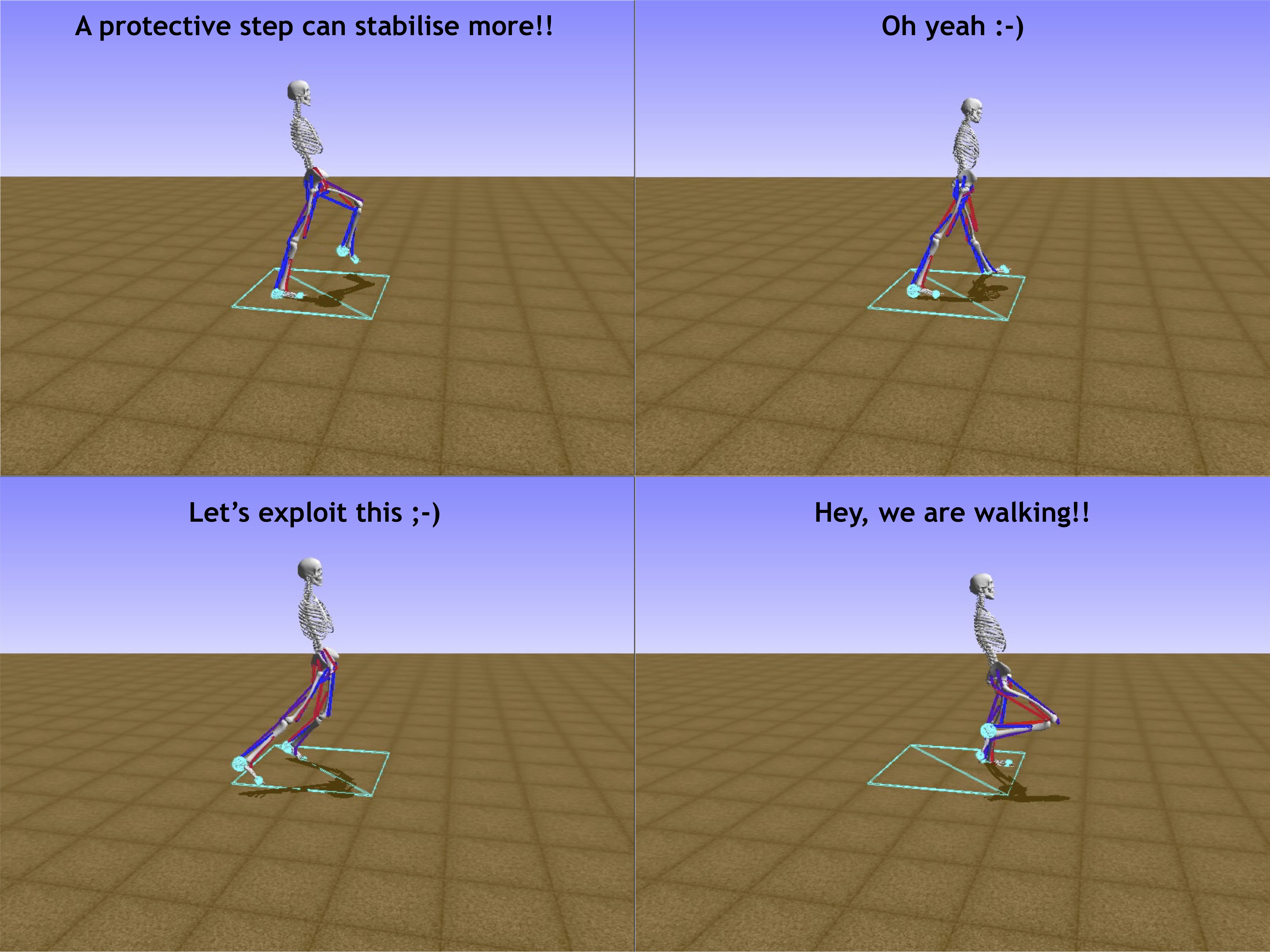Learning to maintain postural balance while standing requires a significant fine coordination effort between the neuromuscular system and the sensory system. It is one of the key contributing factors towards fall prevention, especially in the older population. Using artificial intelligence (AI), we can similarly teach an agent to maintain a standing posture, and thus teach the agent not to fall. In this paper, we investigate the learning progress of an AI agent and how it maintains a stable standing posture through reinforcement learning. During training, the AI agent learnt three policies. First, it learnt to maintain the Centre-of-Gravity and Zero-Moment-Point in front of the body. Then, it learnt to shift the load of the entire body on one leg while using the other leg for fine tuning the balancing action. Finally, it started to learn the coordination between the two pre-trained policies. This study shows the potentials of using deep reinforcement learning in human movement studies. The learnt AI behaviour also exhibited attempts to achieve an unplanned goal because it correlated with the set goal (e.g. walking in order to prevent falling). The failed attempts to maintain a standing posture is an interesting by-product which can enrich the fall detection and prevention research efforts.

